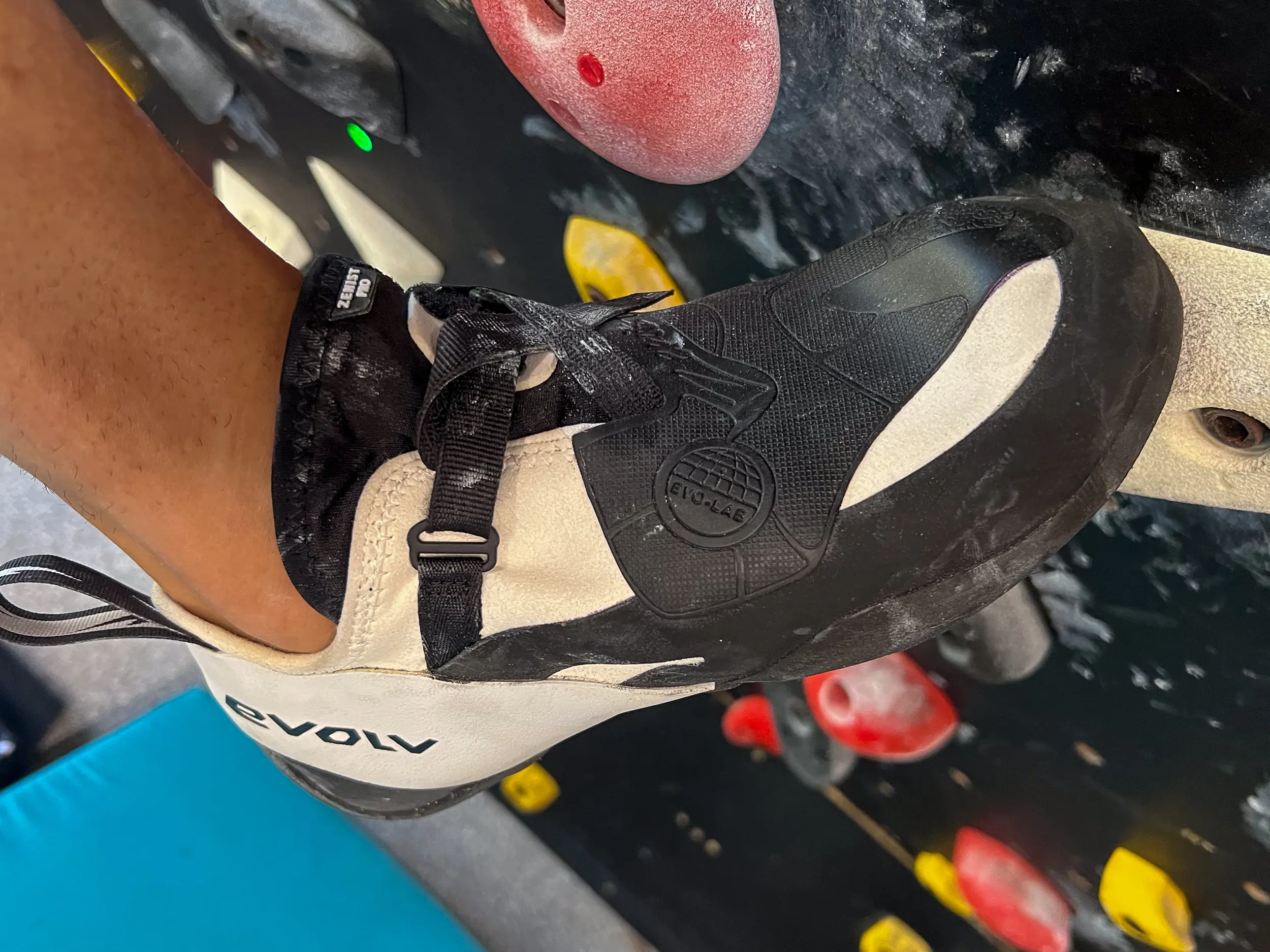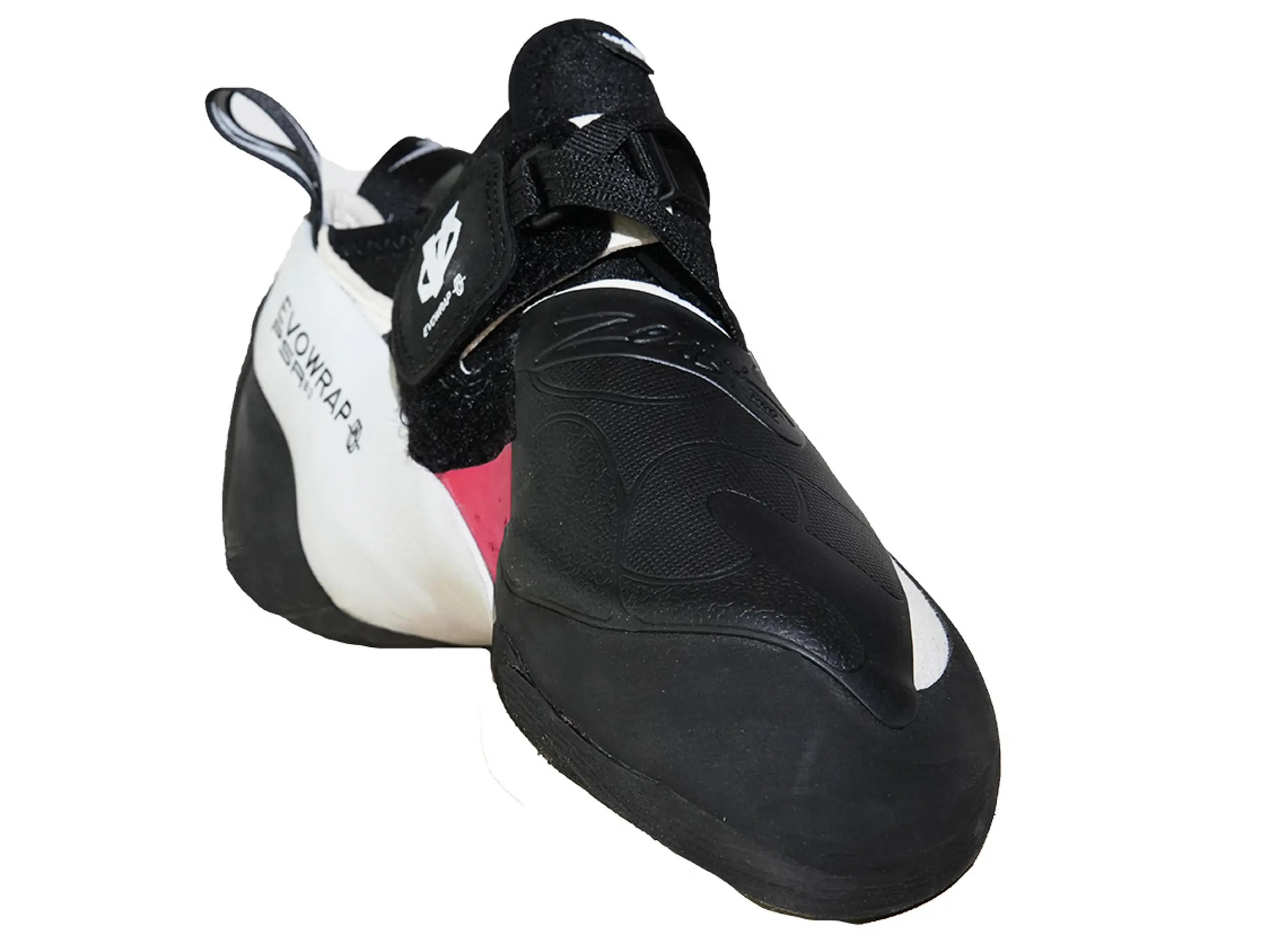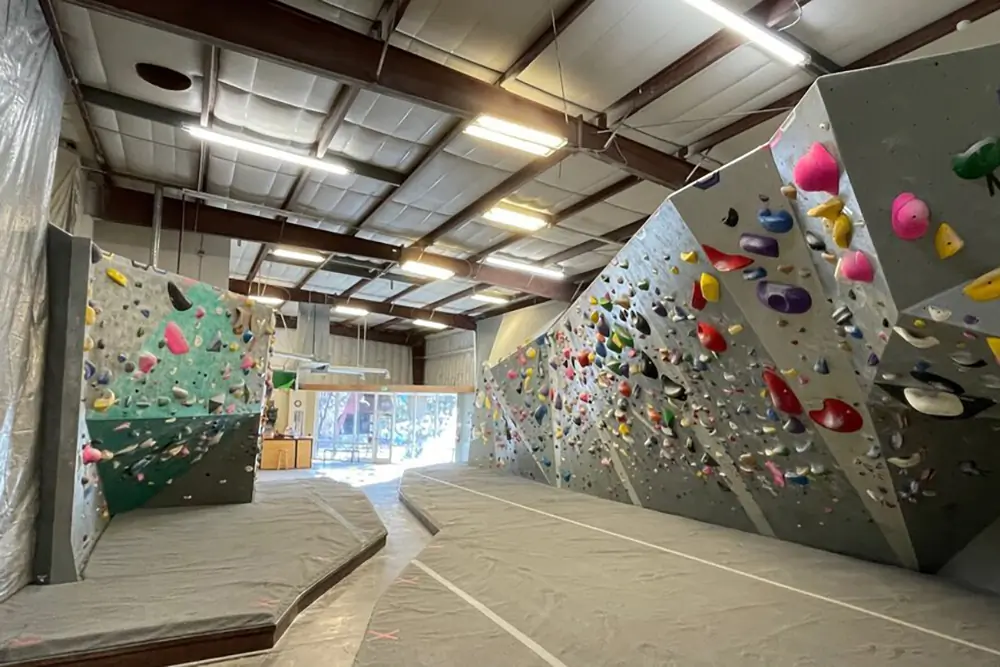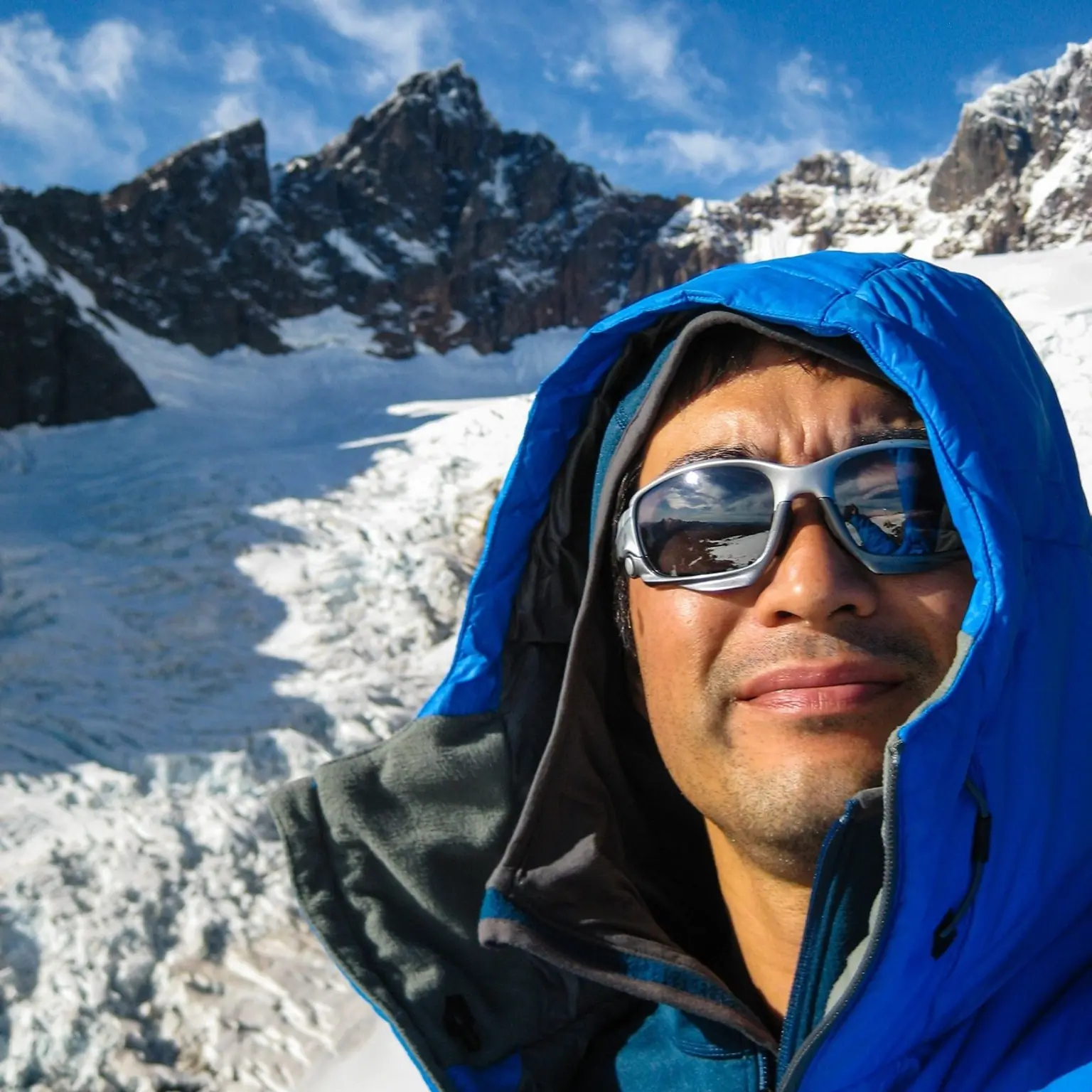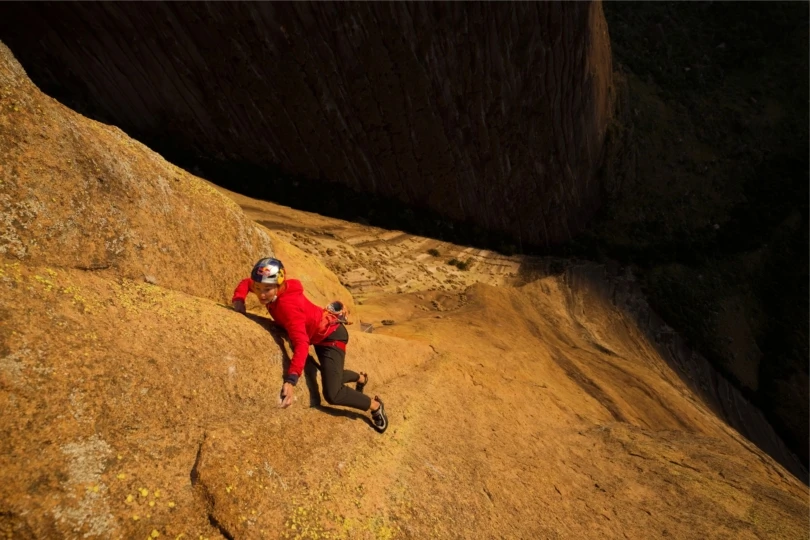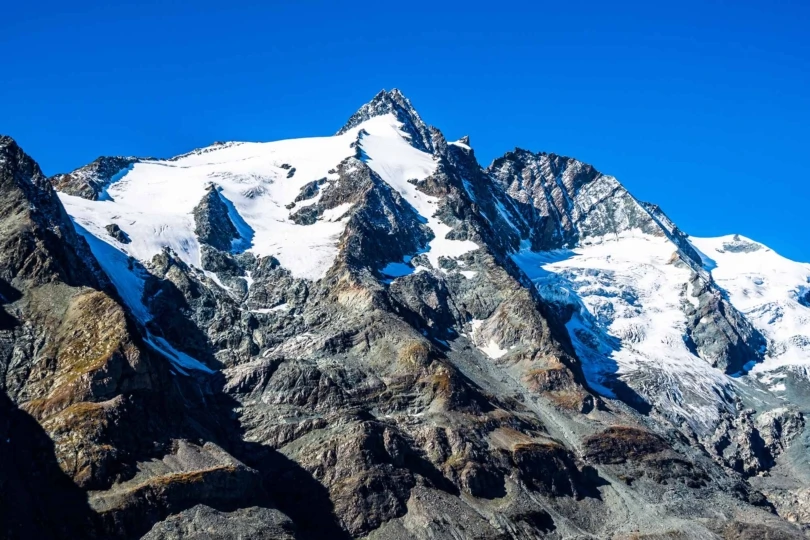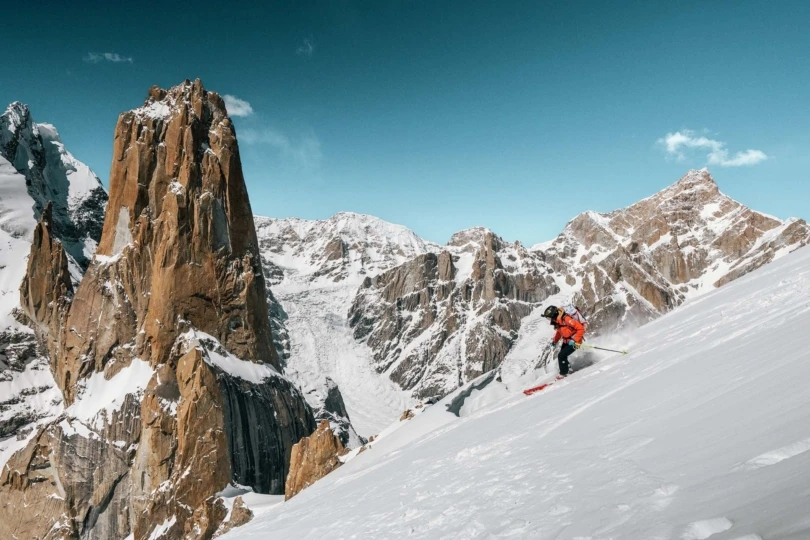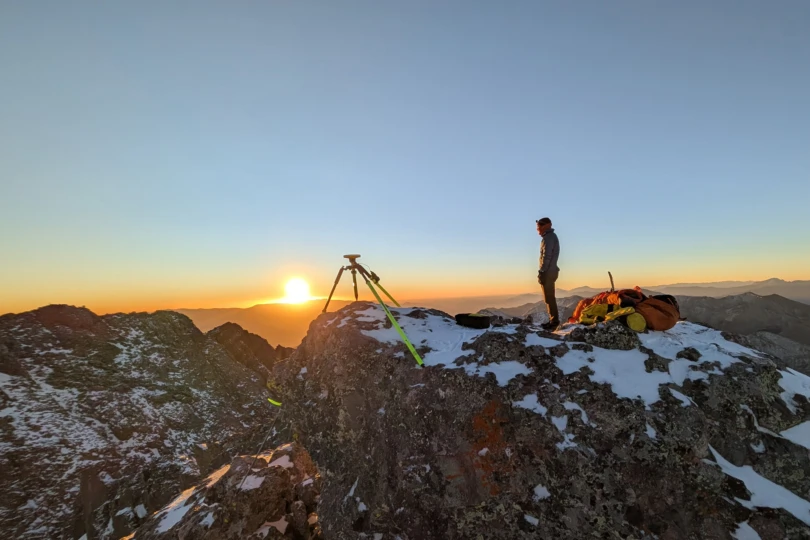I loved the original Evolv Zenist, which was touted as an indoor bouldering and training shoe. The new Zenist Pro and Zenist Pro LV (low volume) promised boosted performance and Evolv’s new EvoWrap technology. I was excited to feel the effects.
Evolv sent the Zenist Pro and Zenist Pro LV to me a few weeks before this week’s launch. The brand touted them as the “ultimate shoe for volumes and competition climbing,” similar to the original Zenist. I tested them over six training sessions on my home Moonboard, as well as a Kilter Board and at a competition-style climbing gym, for this First Look review.
In short: The Zenist Pro and Zenist Pro LV proved to be great fitting, powerful, and supportive shoes with just enough sensitivity for high-end bouldering. They excelled at pulling and edging on holds appropriately sized for harder bouldering. They have more structure than a slipper but maintain enough sensitivity for precise footwork and competent smearing at steep angles.
- Upper material: 100% vegan synthetic
- Midsole: 1.0mm EvoWrap
- Outsole: TRAX SAS
- Sizes: US men's 7.5-12.5/women's 8.5-13.5, medium and low-volume versions
Pros
- EvoWrap improves fit and power without relying on slingshot rand tension
- Fits "duck feet" remarkably well
- Excellent edging and pulling power
- Excellent toe hooking
Cons
- Not as sensitive or compliant as slippers
- Heel may come up high in the back for some
The Zenist Pro Fit
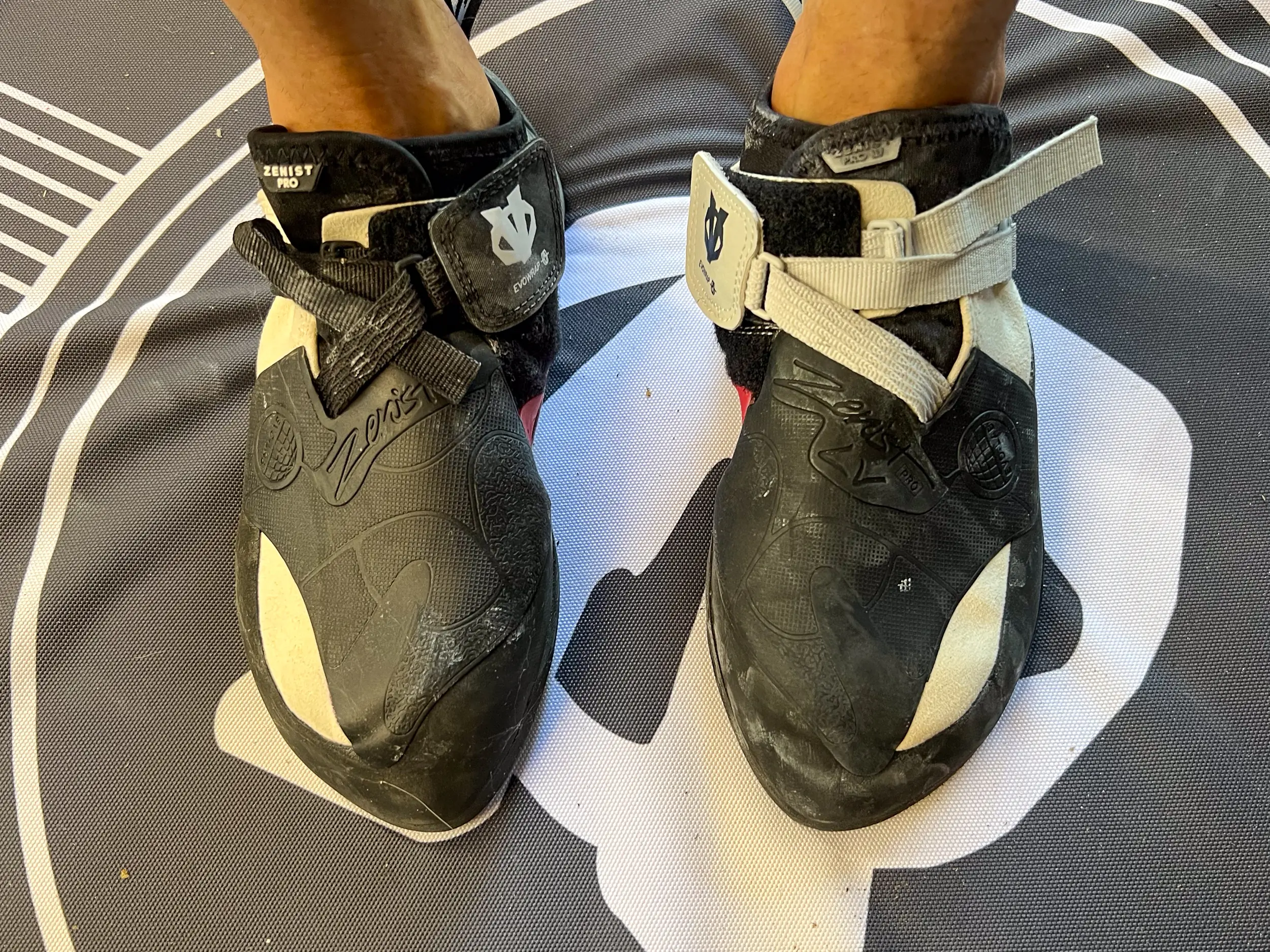
Great for ‘Duck Feet’
I have the classic duck foot; narrow heel, wide forefoot, but thin vertically and low volume. Evolv has historically fit me better overall across all the major rock shoe brands.
The Zenist Pro continued that trend and fit me well right out of the box. The heel was snug; the shoe was in contact across the entirety of my foot. There was just a slight amount of slack in the upper on the lateral side. The toes were snug against the front of the shoe without feeling too forced. And the Evolv “Love Bump,” a bump in the midsole that matches a bent big toe knuckle with a matching bump in the upper, improved the comfort of the decidedly performance-oriented fit.
Evolv EvoWrap Improves Fit
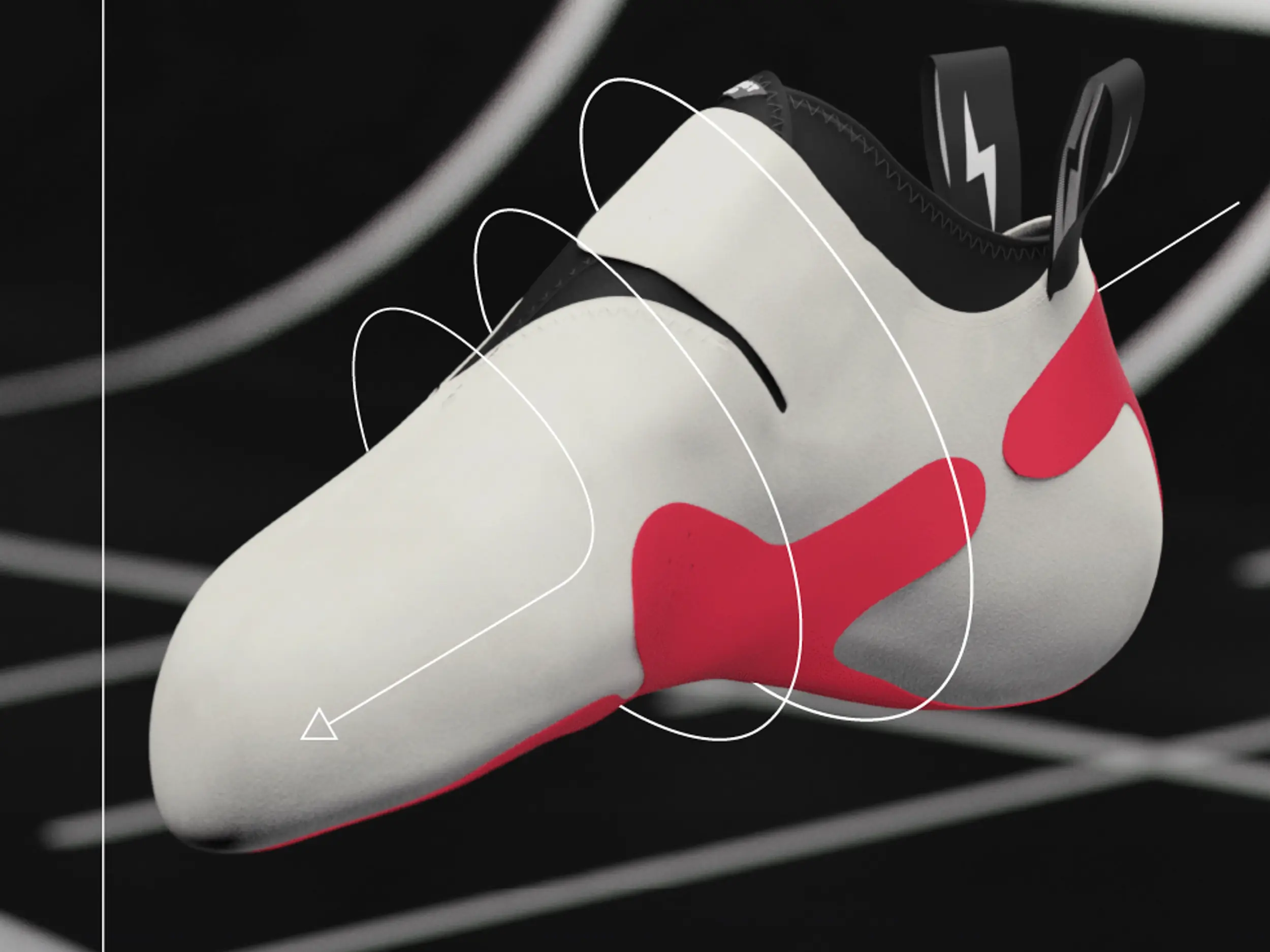



The EvoWrap, a flexible 1.0mm-thick rubber midsole that tensions the shoe in the downturned position, covers the entire length and reaches into the arch. This technology aided the fit in a few ways.
First off, it provides longitudinal tension to tighten the front of the shoe against the toes for a precise and powerful fit. This is done without depending solely on the slingshot rand as in other shoes. The EvoWrap dramatically improved comfort compared to shoes that don’t have any other way of generating longitudinal tension.
Secondly, it felt like it kept the instep in contact with the inside of my foot, which improved fit but also delivered more tactile information. And for me, more is better.
The triple-cross, single-strap closure system Evolv uses on the Zenist Pro completes the EvoWrap system. It’s one of the most adjustable and best-fitting Velcro closure systems available on rock shoes. The system provided even tension across the top of the foot. And I could dial in the amount of pressure around the circumference of my foot at the arch. There is an infinite level of adjustment. Evolv ships the shoes with a generous length of webbing to cut to fit.
The only niggling complaint was the heel of the shoe comes up high in the back. At first, the binding tape there was very stiff, and it caused discomfort in my Achilles tendon. But as the shoe broke in, that became less noticeable, but it has not totally disappeared. This has been an issue for me with other Evolv shoes.
Zenist Pro LV Fit
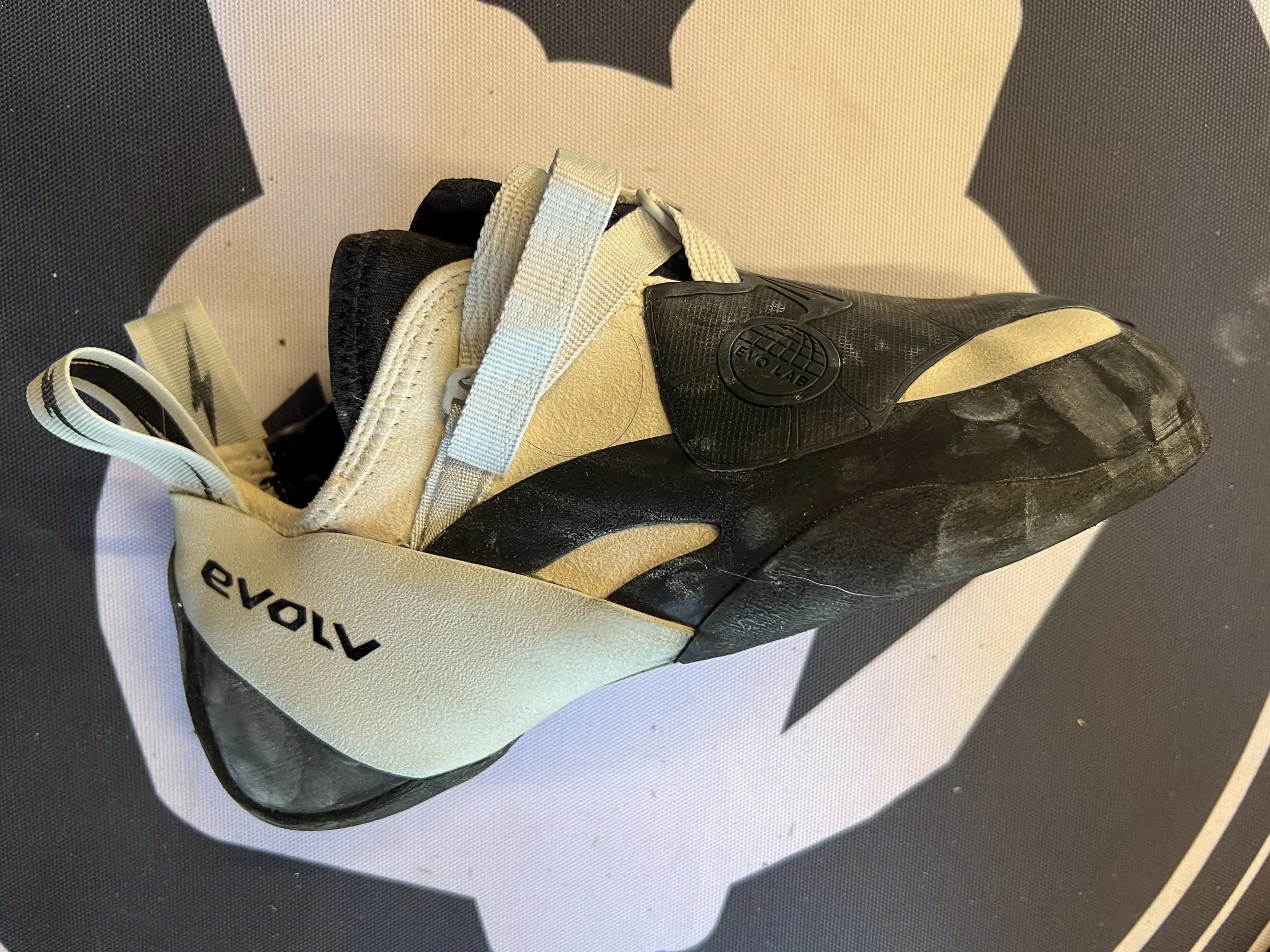



The LV version of the Evolv Zenist Pro fit very similarly to the “normal,” medium-volume version, but it had a slightly snugger fit in every dimension. Evolv staffers told me that the LV version has 6% less volume than the medium-volume model. It was difficult to see a difference, but I could feel it right away; nothing huge, but noticeable.
I used both versions every time I climbed. Sometimes I used a normal version on one foot and an LV on the other. And within a few sessions, I couldn’t decide on which one I would keep if forced to choose. I used the normal version for most of my training. I could keep them on for 45+ minutes, no problem. They were tight but not painful.
The Evolv Zenist Pro LV was tighter, not painful, but more uncomfortable and sensitive. I started using the LV for problems where staying on a difficult foothold was the limiter. And I know that outdoors, on the send attempt, I would want the LV. I could keep them on for about 10 minutes without wanting to switch back during training sessions.
Performance on the Boards and at the Gym
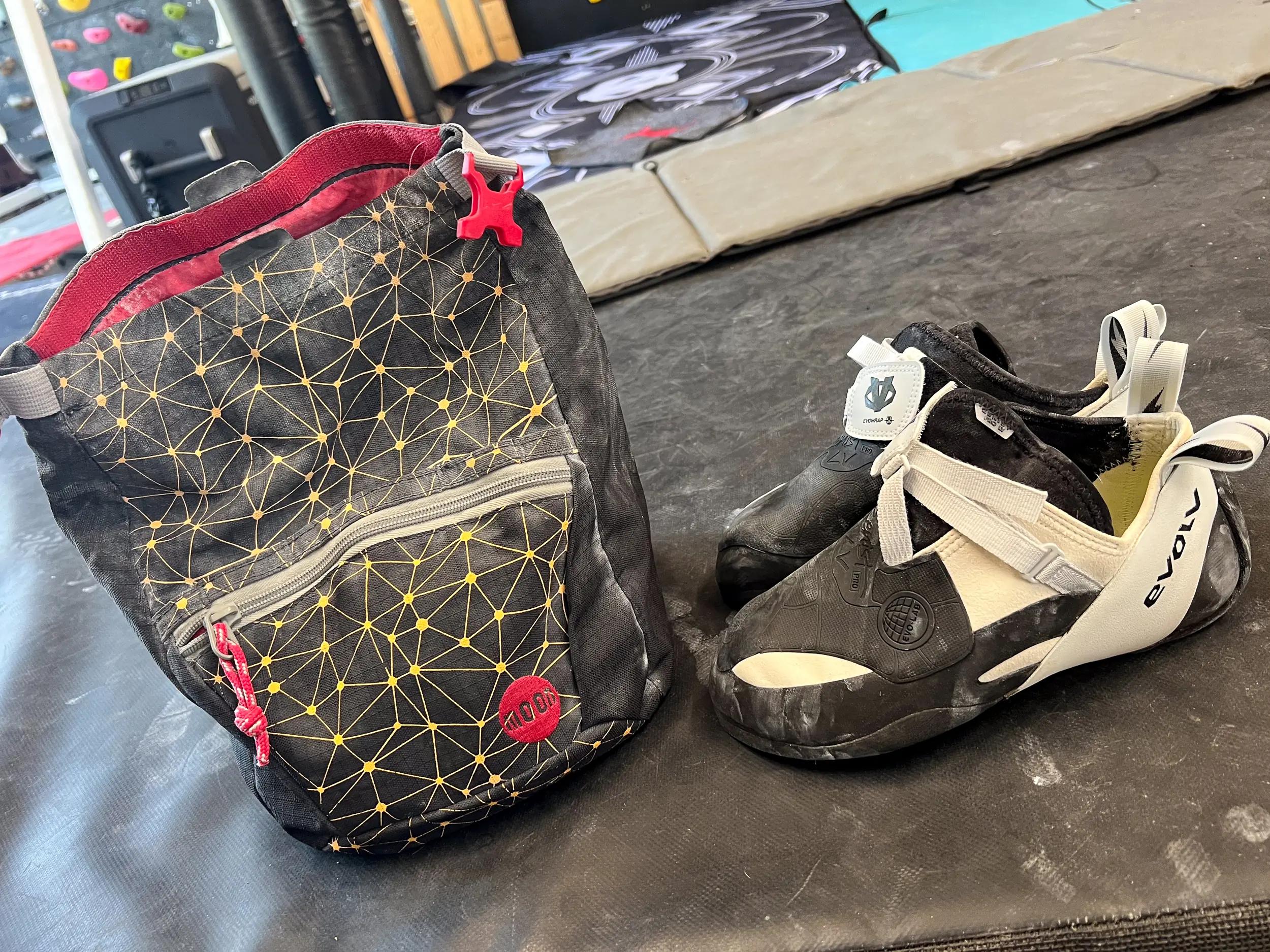



It’s Not a Slipper
First off, the Evolv Zenist Pro is not a super-flexible or flimsy slipper. It has a significant structure. The 1.0mm EvoWrap midsole and 4.2mm TRAX SAS outsole provided support and edging power that was perfect for harder boulders on angles starting at slightly overhanging.
The heel cup was also fairly supportive and stiff, especially at the back. The synthetic upper isn’t paper thin, either; it’s substantial and felt robust. This isn’t a sock with rubber on it.
The massive amount of rubber on the forefoot, the substantial amount of webbing, and the split, overlapping tongue also add a bit of stiffness and structure, as does the wide slingshot rand. All this material is reflected in the weight.
My men’s size 10.5 (I normally wear a 10) registered 1 pound, 5.3 ounces on the scale. The LVs were 0.2 pounds less. In comparison, my Scarpa Furia Air weighs 11.7 ounces per pair, and my La Sportiva Mantra weighs 14.2 ounces per pair. I consider both to be true slippers.
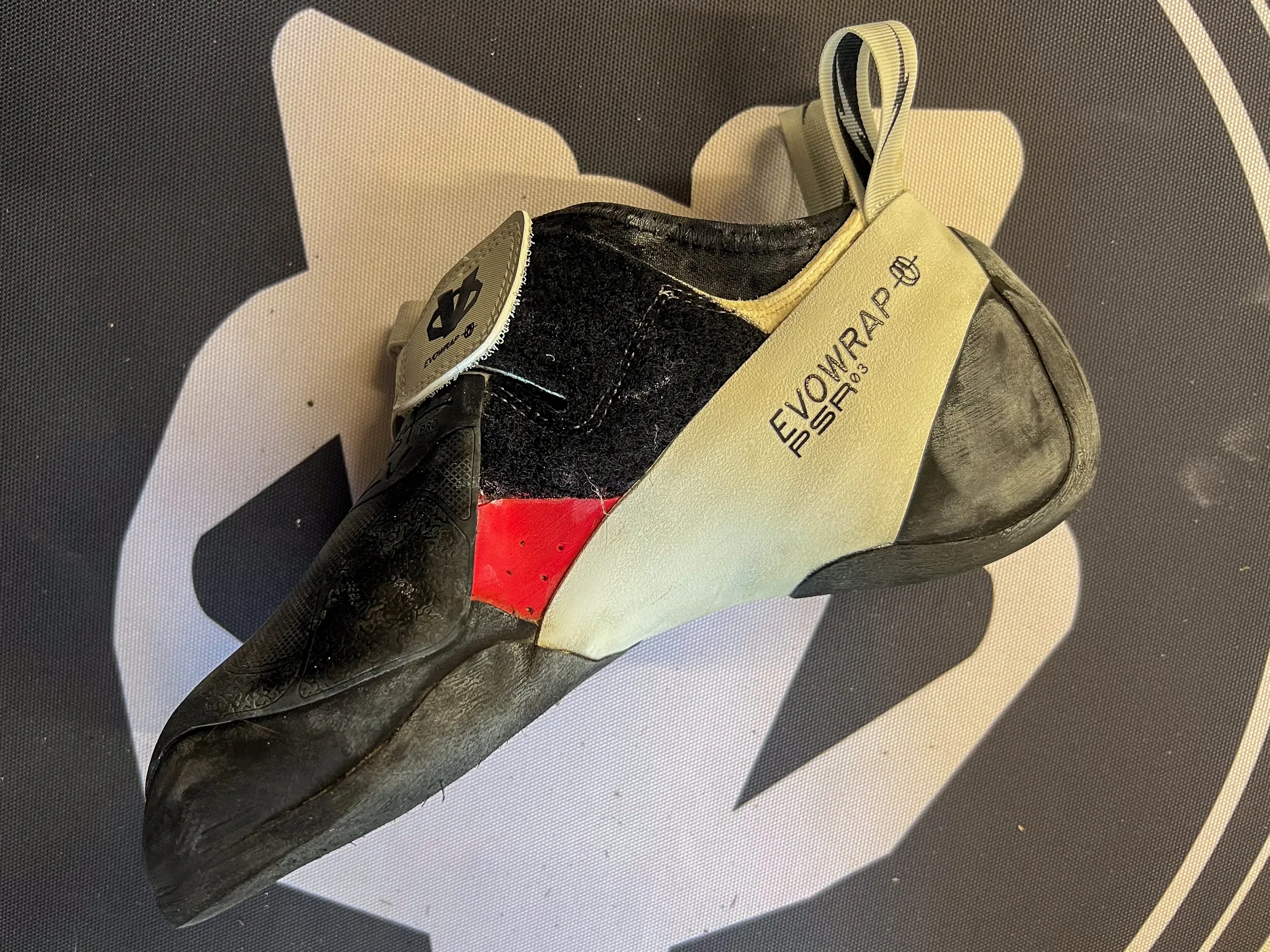



Edging and Pulling Powerhouses
The Evolv Zenist Pro proved to be powerful. The combination of EvoWrap, the fit, Love Bump, and the amount of structure turned my feet into pressure-delivering edging and hip-pulling powerhouses.
That said, the thickness of the outsole did attenuate the sensitivity compared to slippers. But I trusted the shoes, and the payback was power that more than made up for the difference in sensitivity.
The shoe excelled at toeing in on smaller holds or edges and pulling my hips in. The EvoWrap’s “resting” state is in the downturned position, so I felt like I wasn’t fighting the shoe to use to apply downward and inward pressure through my toes. And the Love Bump also aided the efforts to use my feet like claws. And, unlike some other downturned shoes, the downturn didn’t totally disappear as the shoe broke in.
Performance on Volumes, Heel Hooks, and Toe Hooks
Although Evolv markets the Zenist Pro as ideal for volumes, I felt the things that made the shoe powerful elsewhere detracted from the effectiveness on volumes. The structure of the shoe lessened sensitivity, and the ability of the shoe to comply with shapes required for effortless twisting of the foot and other contortions required to run, jump, toe, or drop knee on the flat surfaces of volumes. Smearing on the flat-volume faces was effective once I learned to trust the shoe to do so.
I felt the same about heel hooking as I did for edging and pulling. The fully covered, well-fitting heel and thick back prevented discomfort, even when bearing down with all my might on square edges. And that back end has edges that aided with bite and stability. But compared to bouldering slippers, sensitivity was diminished but workable.
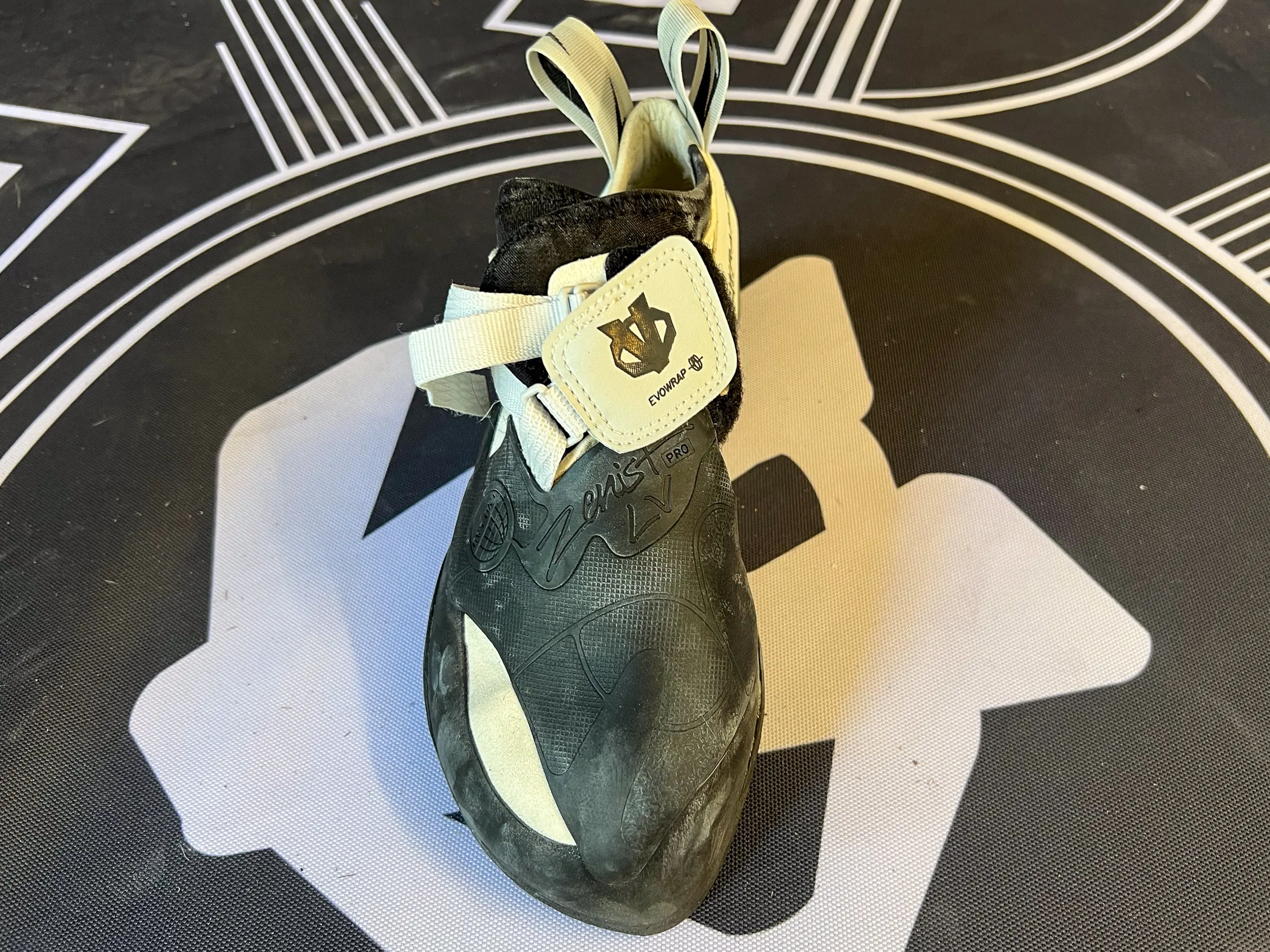



Toe hooking and scumming were a joy in the Evolv Zenist Pro. The generous amount of rubber and the hand of the synthetic upper provided the perfect ratio of sensitivity and protection for pain-free yet precise toe-hooking and scumming moves.
In the end, a lot of performance came from fit. For my duck foot, the precise fit of the Evolv Zenist Pro and Zenist Pro LV itself improved performance.
The TRAX SAS rubber never stuck out in a negative or positive manner. It adhered well to all plastic holds, including the notorious Moonboard starter feet, as well as any other climbing shoe rubber.
Conclusions on the Zenist Pro and Zenist Pro LV




If you want a shoe that excels when the crux move involves powerful edging or pulling on footholds on steep angles, the Zenist Pro and Zenist Pro LV deliver. The shoes also murder toe hooks and high-pressure heel hooks.
If you have a classic duck foot, these shoes fit remarkably well, enhancing the performance attributes. The availability of both a mid- and low-volume version increases the potential for an excellent fit. And they potentially provide “training” and “sending” fits.
The Zenist Pro and the Zenist Pro LV are not slippers. They have more structure and thus more support and power. The downsides to gaining this power are sensitivity and softness (compliance). This is deliberate; these shoes were not meant to be true bouldering slippers.
I would also use the Evolv Zenist Pro and Zenist Pro LV for outdoor bouldering and on short, steep sport climbs. I believe they would perform incredibly well in these disciplines for the same reasons they were stellar on the boards and in the gym.
And a final nick; the Evolv Zenist Pro is among the most expensive rock shoes I’ve tested. At an MSRP of $219, they are not for bargain hunters.
